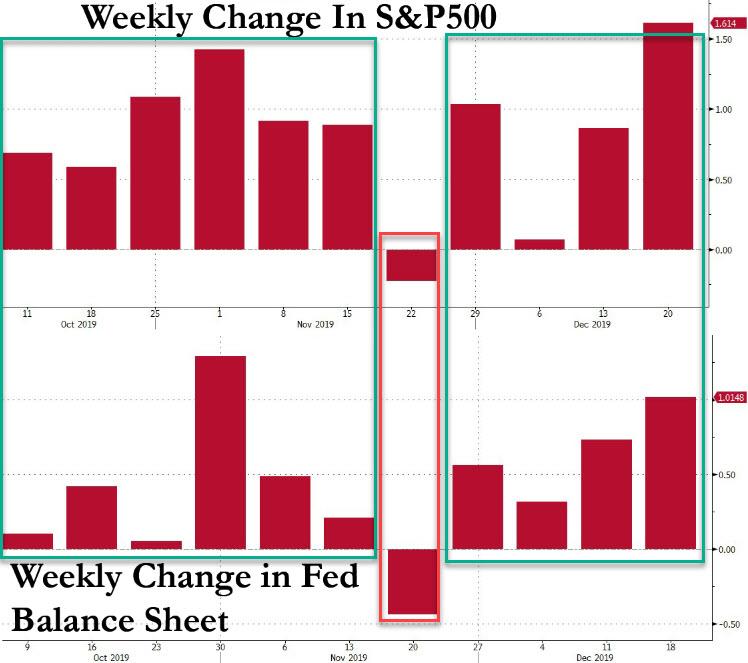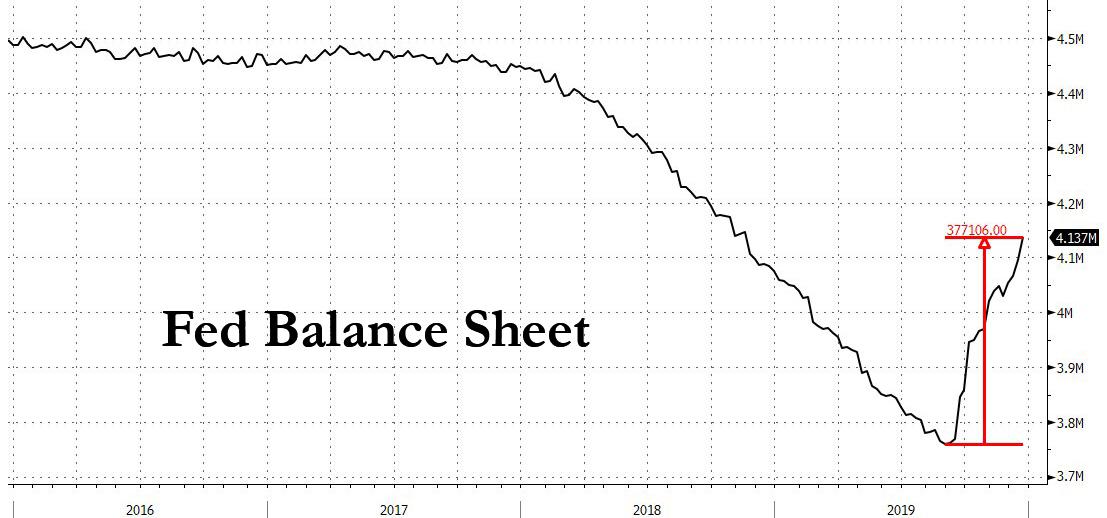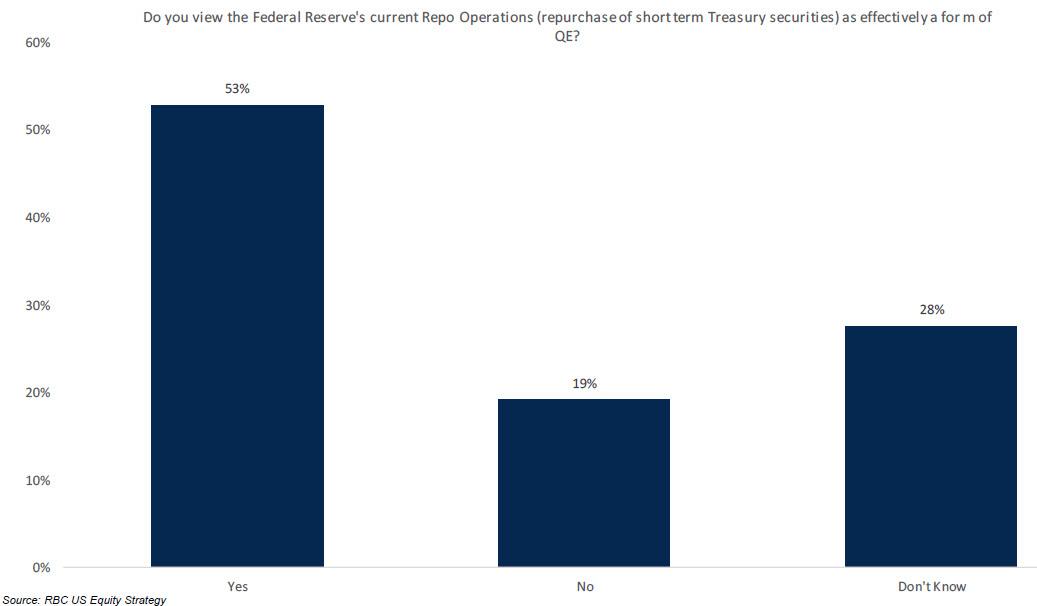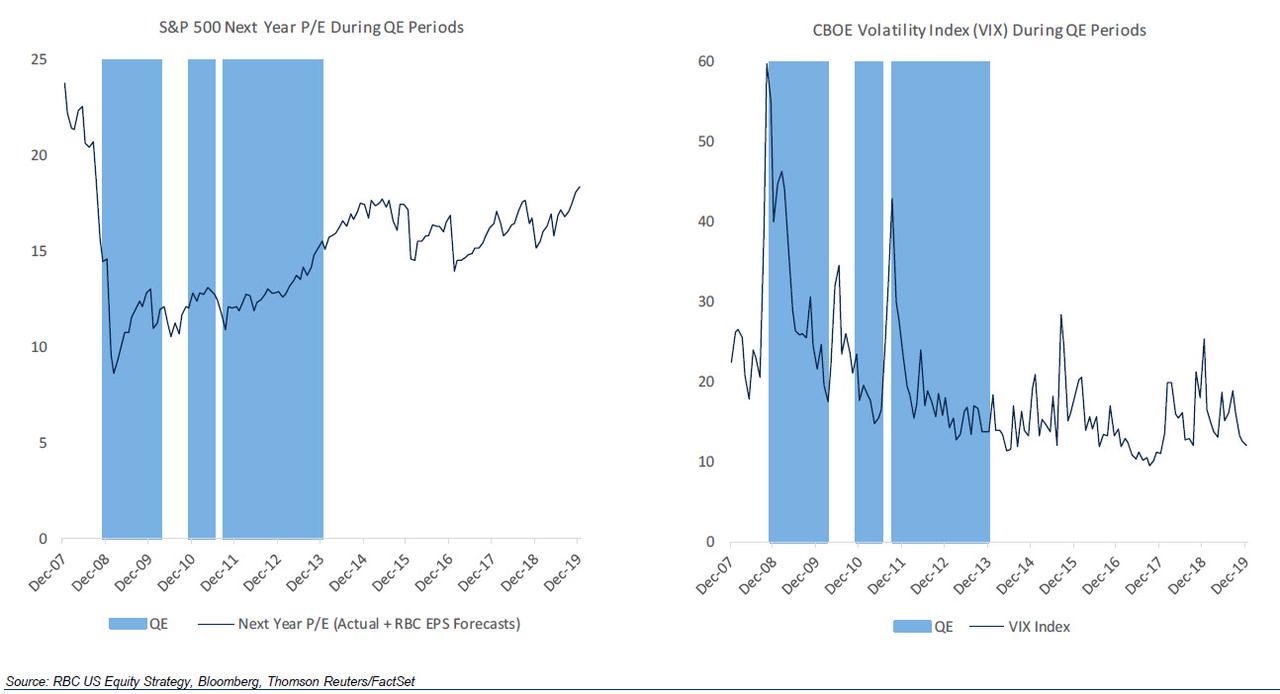A Majority On Wall Street Are Convinced The Fed Is Currently Engaged In QE
While the Fed and its sycophantic echo chamber has been engaged in a bizarro propaganda campaign to convince the public that the monetization of $60BN in T-Bills and the biggest Fed balance sheet expansion in 5 years (and the fastest on record) is not QE, two weeks ago we demonstrated that what the Fed is doing is, in fact, QE and not just according to sellside research but also according to the market, which ultimately is all that matters because if traders think the Fed is engaging in QE they will act accordingly… and lo and behold, the S&P is up 10 of the past 11 weeks since the Fed launched its T-Bill POMO, and the only week the S&P dropped was s when the Fed’s balance sheet declined.
Furthermore, since the oh so convenient repo crisis, which as a reminder was started by JPMorgan to force the Fed to ease financial conditions, the Fed’s balance sheet is now up over $377 billion, and considering the Fed may inject another $400 billion in the next month, we expect the Fed’s balance sheet to hit an all time high some time in late January.
And yet, the Fed – and a bunch of “expert” hacks – still claim that it is not conducting QE.
Only this time the Fed is failing to fool even a majority of the people, because according to a majority of traders, despite the Fed’s protests to the contrary, the Fed is currently engaged in QE.
As RBC notes, as part of its December 2019 investor survey it added a new question, asking whether equity investors think the Fed’s Repo operations are effectively a form of QE, “something we’ve heard our more bullish clients allude to in our recent meetings.”
The response: a little over half, or 53%, said that they believe the Fed’s recent actions in the Repo market are effectively a form of quantitative easing, whereas only 19% of participants do not see it as a form of QE (likely the same “experts” who honed their market skills in graduate school and without ever actually having traded). Finally, another 28% are so clueless that they don’t know (but are buying anyway).
Why is this conviction that QE is back precisely what the Ph.Doctor ordered: after all, during historical periods of quantitative easing, the S&P 500’s forward P/E (based on next year’s EPS) expanded substantially while the programs were in place. At the same time, the VIX also came down from elevated levels, resulting in higher risk taking in equity markets.
It goes without saying, that this is just the outcome the Fed wants: the Fed is engaged in massive QE, but just because semantically there are a few small differences from the conventional definition, the Fed can pretend it is not doing QE – an emergency action reserved for when the economy is crashing which may have spooked markets – while reaping all the benefits of injecting hundreds of billions into the market. Such as the market at an all time high.
Tyler Durden
Fri, 12/20/2019 – 13:35
via ZeroHedge News https://ift.tt/2MdVP2o Tyler Durden



